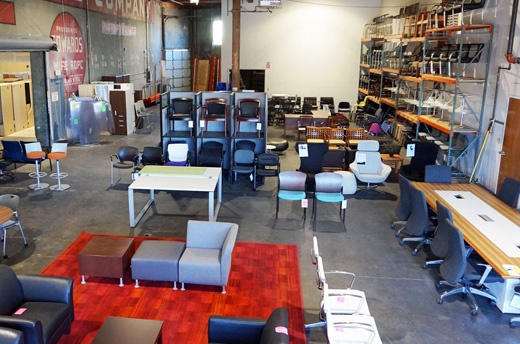3 Tips for Lean Entrepreneurs Bootstrapping a Startup
In the early stages of your startup, cutting costs is crucial, and often takes a blend of both creativity and finesse. For better and for worse, the general terrain that you’ll be navigating to get your company up and running presents as many opportunities as it does challenges.
Nowadays, the ease and accessibility of starting a venture, finding relevant resources and mentors, and connecting with potential clients on the internet creates a ton of competition, especially among new players.
As a result, you may not always be able to get the optimal price for your services or products on day one. Investors can fall few and far between and will want hard data — usually hard sales numbers — to prove that there is, in fact, a demand for your offerings.
In the meantime, it’s crucial to find other ways to save and cut back on costs as you are growing your business. So if you’re a lean entrepreneur trying to bootstrap a startup, the following tips are for you:

“But what kills small businesses that are not household names is the cost of hiring people and the cost of rent. It’s not necessary to have your own lobby and your own office.” - Marcus Moufarrige, CEO of Servcorp
1. Be Flexible with Your Workspace Options
We’ve all probably heard the now, almost mythical, stories of the rise of today’s entrepreneurial giants like Bill Gates, Elon Musk, Mark Zuckerberg, or the late Steve Jobs. One thing all these stories have in common is the frugality that they all embraced during the early stages of their companies. Zuckerberg worked from his dorm, Jobs from his garage, and so on.
Simply put, having a company office is an unnecessary expense when you are bootstrapping most startups, and any experienced entrepreneur will agree.
There are a number of options available to entrepreneurs when looking for a workspace. Some of the most popular are:
-
Home offices
-
Co-working spaces
-
Startup incubators
-
Executive office suites
-
Virtual offices
-
Remote work arrangements
By default, working from home will save immediate costs, and is a good idea for very early stages. If you need to meet with potential clients and investors, you can always meet at a local restaurant or coffee shop.
Co-working spaces at least give you an opportunity to work on your business away from home, but it may feel a bit strange to share ideas and talk about intellectual property with your teams when there are other freelancers, remote workers and entrepreneurs sharing the same space. As long as you have some privacy when needed.
Startup incubators can be great options if you’re looking for flexible office space, hardware, and mentors to help your startup grow quickly. These are generally fairly competitive and you may need to apply to get into one that fits your startup’s needs, but these are ideal for smaller companies who need to refine their ideas, business plan, product market fit, and pinpoint intellectual property hurdles.
If you have more capital at your disposal, executive office suites are essentially incubators but on steroids; they’ll come with administrative support, mail services, top-notch utilities, and more perks. A more affordable option would be to acquire a virtual office space so you have a physical address; these can be great for setting up inexpensive branch offices quickly.
And another option is to avoid having to rent space altogether by working with remote workers and freelancers; while this can come with its own set of unique challenges, it’s entirely possible to work with other driven entrepreneurs from around the world without ever leaving your home.

2. Look for Alternative Revenue & Income Options
The early stages of a startup are always exciting, but you’ll soon realize that things will get exponentially harder without some kind of cash flow. And while most entrepreneurs would ideally quit their day job to focus on their small business full time, that’s simply not possible for everyone. As a result, you’ll probably have to do some side-gigs to keep yourself fed and the business growing, or look for other alternative sources of revenue.
Ideally, you’ll want to find a gig where you can make your own schedule while utilizing the skills relevant to your business. Luckily, there are a good number of platforms dedicated to connecting freelance workers of all backgrounds with potential clients.
Upwork and Fiverr are two of these platforms that many entrepreneurs use to find various freelance work. Simply visit the websites, create a profile that showcases your skill sets, relevant experience, and a brief bio — then quickly and easily search through the results from people seeking services from freelancers. Whether its graphic design, mobile application design, web development or anything in between, you’re likely to find someone who can efficiently do the work you need to without paying them a full-time salary.
Look to community hubs like Reddit to find experts in your niche that would be willing to work on your project. Not only will you be able to network with professionals in your industry, you’ll learn valuable insight from other entrepreneurs and experts in your space.

3. Never Buy “Brand New” Gear
One of the biggest mistakes that startups make is they spend way more money than they need to.
It’s easy to overspend when you get your first real round of cash flow coming in — whether that be from an angel investor, a crowdfunding campaign, or a product launch — and when you finally have funding, you’ll want to be smart with how you invest it into your company.
You may want to boost productivity by dishing out brand new, blazing fast computers to your software engineers. Or you may want to attract new talent, so you decorate the office with brand new furniture to peak interest of top candidates.
Instead of paying top dollar, an easy way to save money is to buy used office furniture, refurbished computer hardware, etc. When you buy used, you can still incentivize employees and pour the savings back into scaling the company.
The reality is, especially when it comes to technology, your hardware will be outdated in as little as 6 months. As an alternative to buying your employees brand new delivery cars or on-site repair vans, opt instead for a lightly used vehicle — you’ll save cash, so you won’t get tied up if you need to invest the money elsewhere, and you can always turn around and sell the vehicles a few years later to get newer models when you need to.

Overcoming Boostrapping Obstacles
Generally speaking, if you want to save money, that means you'll have to spend time. If you want to save time, then you'll have to spend money.
There's no other way around it.
And bootstrapping a startup isn't easy, but it's entirely possible. Connecting and networking with people who have done it before and learning from their stories and their mistakes is one of the best ways to learn how to grow your startup. As long as you're patient, surround yourself with positive mentors, and learn how to improvise, adapt, and overcome, you'll have your company funded before you know it.








